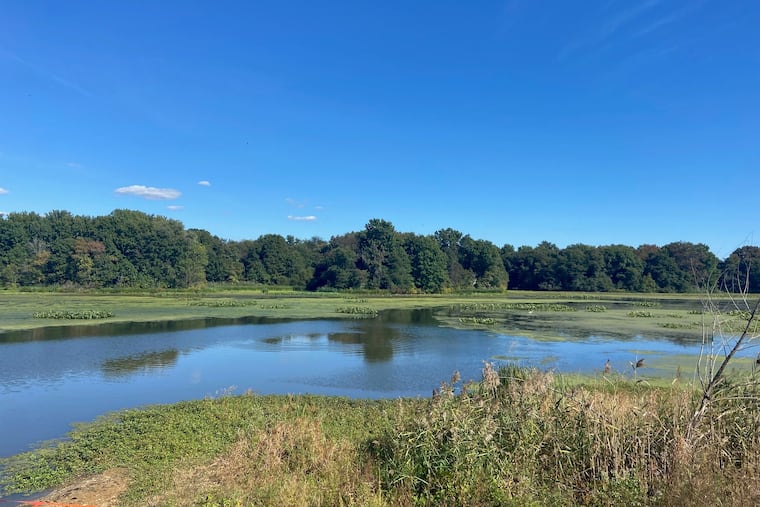Pennsylvania leaders must protect our wetlands
Wetlands are the kidneys of our rivers, lakes, and streams — acting as filters that absorb pollutants before they flow into our drinking water systems.

Earlier this year, the U.S. Supreme Court limited the Environmental Protection Agency’s authority to protect millions of acres of wetlands with the ruling in Sackett v. EPA.
A wetland is not an island. Our nation’s waterways are connected — even when they are not wet year-round. The Supreme Court’s decision to strike federal protections will have profound implications for wetlands in many states, including approximately 400,000 acres of wetlands in Pennsylvania, 296,350 acres in Delaware, and over 900,000 acres in New Jersey.
But Sackett does not need to be the end of the story. Nor should it be the only way our leaders mark the Clean Water Act’s 51st anniversary.
Pennsylvania needs to step up to the challenge. Gov. Josh Shapiro must harness the full extent of his authority to safeguard the commonwealth’s wetlands. By doing so, we can strengthen our communities against the escalating threat of floods triggered by increasingly severe storms, and guarantee continued access to clean drinking water.
Wetlands filter clean drinking water for people, provide critical flood protection for communities, and serve as essential wildlife habitat. The EPA estimates that the Sackett decision removes federal Clean Water Act protections from up to 63% of wetlands and threatens protections for up to 4.9 million miles of streams.
We only need to look to half a century ago to see why these protections have been invaluable. After World War II, our country experienced rapid development and accelerated industrialization. Yet this golden age for the U.S. economy was not without its toll. Toxic waste and sewage were dumped, untreated, into the nearest stream. A series of high-profile river fires — yes, rivers on fire — are why Congress intervened and passed the Clean Water Act in 1972. It passed with sweeping bipartisan support.
Few laws have been as transformative to the nation’s quality of life as the Clean Water Act. The goal of the act was nothing less than “to restore and maintain the chemical, physical, and biological integrity of the Nation’s waters.”
To achieve this goal, Congress created a cooperative federal structure, giving the Environmental Protection Agency and the U.S. Army Corps of Engineers broad authority to work with states and protect wetland resources.
While implementation of the Clean Water Act overall has certainly met with roadblocks, it is hard to overstate the ongoing importance of the act. The law, according to a recent report by the National Wildlife Federation, has helped policymakers limit pollution, prosecute polluters, and fund restoration efforts.
Its National Pollutant Discharge Elimination System program alone prevented 700 billion pounds of pollutants from entering our waters annually. Approximately 200,000 “point source” polluters — such as sewage treatment facilities, paper mills, petroleum refineries, indoor hog farms, and certain construction sites — fall under the law’s jurisdiction.
In addition to reducing pollutant loads, America’s conservation of wetlands under the Clean Water Act has been one of the rare success stories amidst the global wildlife crisis and growing extinction risks that threaten nearly every branch of the tree of life. In fact, the most recent “State of the Birds” report underscores that even with some bird species nearing a tipping point, waterfowl and ducks have defied the broader trend toward extinction because of concerted and proactive investments through laws like the North American Wetlands Conservation Act and the protections of the Clean Water Act.
The Sackett ruling will not reverse the gains of ducks and waterfowl, but it could result in unthinkable risks as wetlands are opened to destruction and development. It also could leave people at higher risk of flooding and polluted drinking water. An estimated 14.2 million people rely on the Delaware River watershed for clean drinking water.
Wetlands are the kidneys of our rivers, lakes, and streams — acting as essential filters that absorb pollutants before they flow into our drinking water systems. They are also sponges for floodwaters. In one well-studied example, wetlands prevented an estimated $625 million in damages during Hurricane Sandy.
Pennsylvania has strong wetland protections, but that doesn’t mean they will always stay that way. Gov. Shapiro should ensure that they do. Our water, wildlife, and way of life in Pennsylvania are worth it.
Kelly Knutson is the director of the Coalition for the Delaware River Watershed. Ellen Kohler is the director of applied research and programs at the Water Center at Penn.